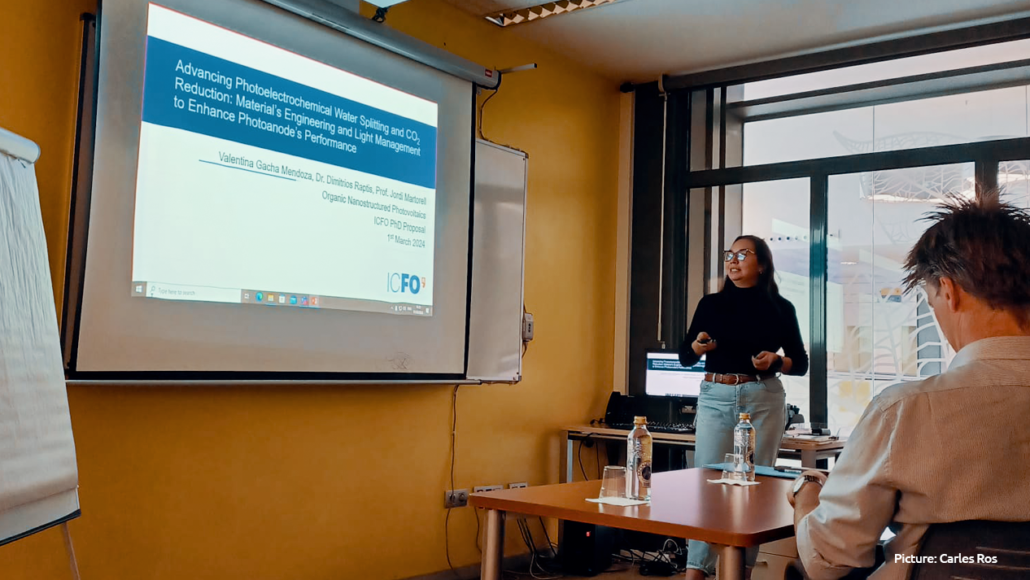SOREC2 PhD student Valentina Gacha presents her PhD thesis proposal on optimizing BiVO4 photoanodes
Valentina Gacha, a PhD student at ICFO and a member of the SOREC2 project, recently presented her thesis proposal which focuses on improving the efficiency of a crucial component in solar energy technology: the photoanode.
Gacha’s PhD thesis aims to optimize the efficiency of Bismuth Vanadate (BiVO4) photoanodes, specifically their internal photon-to-current efficiency (IPCE), which measures how effectively light is converted into electrical current. Her work aligns with the SOREC2 project’s objective of developing bias-free tandem devices, a type of solar cell that combines multiple light-absorbing layers to capture a broader range of the solar spectrum, ultimately leading to higher efficiencies.
Valentina Gacha’s PhD thesis is under the supervision of Prof. Dr. Jordi Martorell, leader of the Organic Nanostrutured Photovoltaics group at ICFO and coordinator of the SOREC2 project, alongside Dr. Dimitrios Raptis, postdoctoral researcher at ICFO and also a member of the SOREC2 team.
Gacha’s approach to enhancing IPCE involves two main strategies: material engineering and light management. During her presentation, Gachá discussed the progress made in material engineering, including various fabrication techniques and the incorporation of charge transport layers to improve the flow of electrical charge within the photoanode. A noteworthy achievement was the successful implementation of a passivation layer, which improved the charge transporting effectiveness of the existing SnO2 layer. These experiments resulted in a remarkable 30% increase in the photoanode’s current density. Additionally, Gacha presented her approach to fabricate nanostructures on the photoanode Surface by using electron beam lithography.

The other pillar of Gacha’s research is light management. Here, the challenge lies in finding ways to enhance light absorption while ensuring the photoanode preserves its optical properties for optimal function within the tandem device. This aligns with another SOREC2 project objective: creating a multilayer structure that can absorb a wider range of sunlight.
“On one hand, there’s the photoelectrochemistry, including the sluggish reaction of water oxidation, while on the other hand, there’s the construction of structures designed to aid in light absorption, which may inadvertently interfere with the water oxidation process.”, said Valentina Gacha. “Multiple trials and experiments are necessary to navigate and resolve these complexities.”
Gacha’s research will contribute to the development of a compact photoelectrochemical Cell (PEC), which is one of the main objectives of the SOREC2 project.. These devices integrate all the essential components for CO2 conversion, including organic and perovskite solar cells, the BiVO4 photoanode with its nanostructured surface, and a water oxidation catalyst.
“This thesis proposal provides an excellent opportunity to pause and reflect on the path I’ve charted thus far and consider the direction I wish to pursue. It’s crucial because it allows for alignment of the plan with both my supervisor and colleagues, providing a more concrete timeframe to organize and plan all the experiments effectively”, said Valentina Gacha.
Gacha presented her thesis proposal last 1st of March in front of a committee consisted of Dr. Rob Sewell (ICFO), Dra. Carolina Gimbert (Universitat Autònoma de Barcelona), and Dra. Catarina Ferreira Gonçalves (POLIMA).





